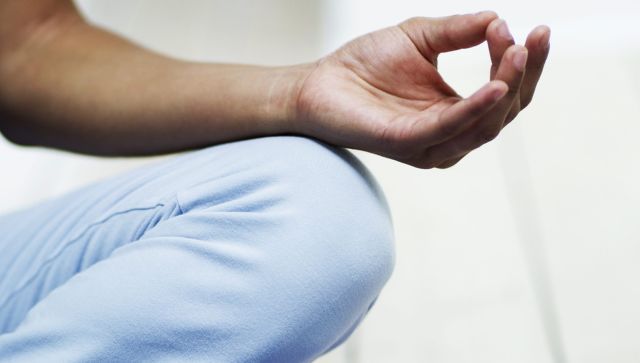Photo Credit: Spirit-Fire, via Flickr Creative Commons
In the Ornish Reversal Program (Intensive Cardiac Rehabilitation) we talk about the power of the four elements: Exercise, Nutrition, Stress Management and Social Support. Each element supports the others to create a strong foundation for health and wellness, and our outcome research has consistently shown that participants experience dramatic decreases in their levels of stress and depression as well as significant improvements in their vitality and quality of life.
Now new research is further bolstering our recommendation that combining exercise and meditation improves depression.
By combining meditation and exercise, you can positively impact depression while enhancing brain activity
We usually associate exercise with benefits such as improvements in strength, aerobic capacity and weight loss. But we often overlook that exercise can also be a treatment for anxiety, stress and depression that can be used alongside counseling and traditional medical therapy. In fact, not only has physical activity been associated with feeling more satisfaction with life and improved cognitive function, in some cases it has been shown to be as effective as antidepressants.
A 2006 meta analysis of 11 studies showed that depressed adults who took part in aerobic exercise improved as much as those treated with antidepressants. A 2011 study that looked at 127 depressed people who had not experienced relief from SSRIs (a common type of antidepressant) found that exercise helped 30 percent overcome depression symptoms.
Meditation and Exercise
A 2016 study published in the journal Translational Psychiatry by researchers at Rutgers University found that by combining meditation and exercise, some people can positively impact depression while enhancing brain activity.
Scientists studied a group of men and women who were diagnosed with non-psychotic depression. The subjects were asked to try 30 minutes of focused attention meditation and 30 minutes of moderate aerobic exercise twice a week for eight weeks. The results of this study were impressive, showing a 40 percent reduction in depressive symptoms in both clinically depressed and non-depressed students after eight weeks.
Both exercise and meditation are activities that can cost very little money and have few, if any, negative side effects. While we’ve known for some time that both exercise and meditation have psychosocial benefits independently, this new study highlights the improved outcomes when two healthy interventions are combined. This follows suit with our multi-element approach in the Ornish Reversal Program and continues to confirm the important benefits of both exercise and stress management.
Here are some basic tips to help exercise be a positive factor in treating stress and depression:
Check with Your Physician
Moderate intensity exercise is advised. As always, first check with your physician to confirm exercise is appropriate for you at this time. Tell your doctor that your goal is to include exercise as part of your overall approach to health, along with any medical or therapeutic treatment they advise.
Find Activities You Enjoy!
If you’re including exercise as part of your treatment for depression or anxiety, make sure you actually enjoy the exercise you’re doing and the environment in which you’re doing it. Not only will this help your consistency, it will put you in a more positive mood when participating. Exercising to treat anxiety and depression should not be a source of stress. If you find it your exercise program is creating stress, take a step back and discover what changes can you make.
Exercise Three Days Per Week
To get the health benefits of exercise and meditation, consistency is key.
In our ever busier and stressed-out world, and with cases of depression on the rise, combining these two practices can be a powerful gift to yourself to help keep you healthy both physically and mentally.
Wondering where to get started with meditation? Read the Ornish Living article How Does a Busy Person Begin a Meditation Practice?
This content was originally published on Ornish Living.






